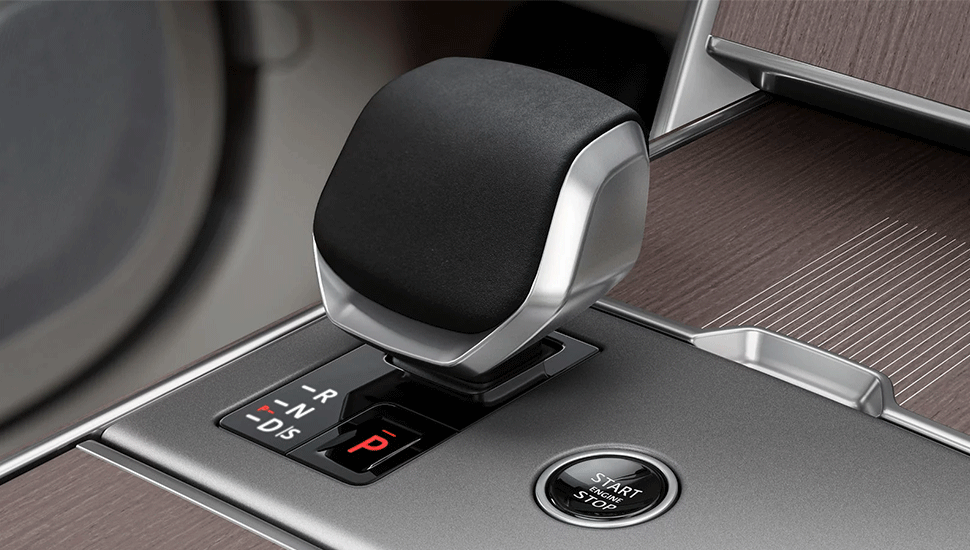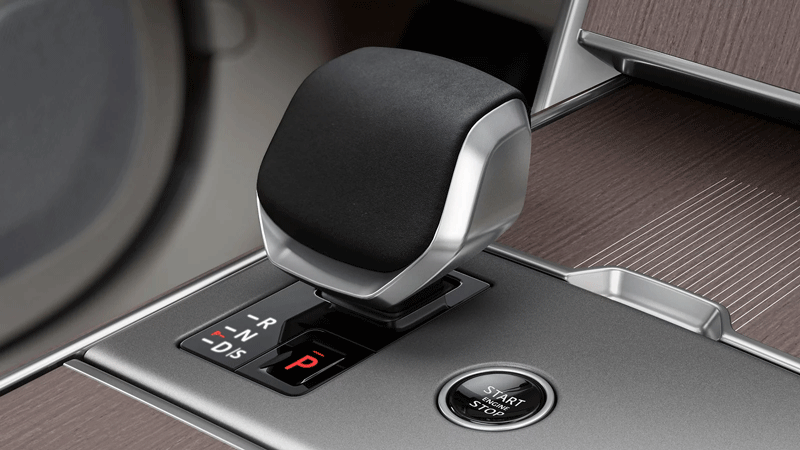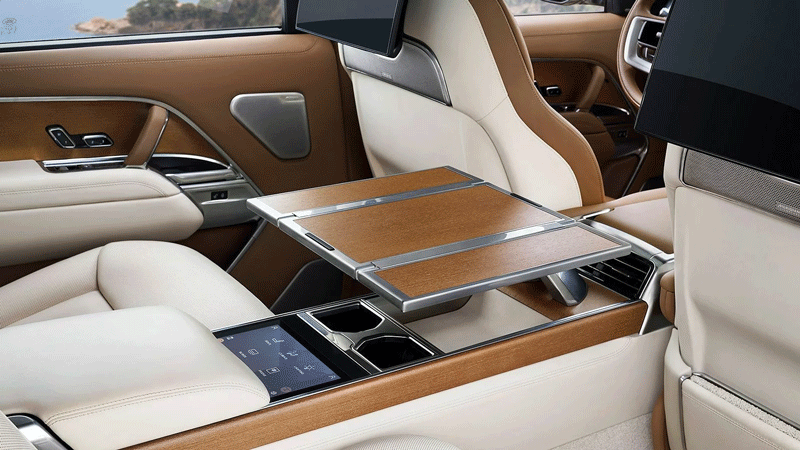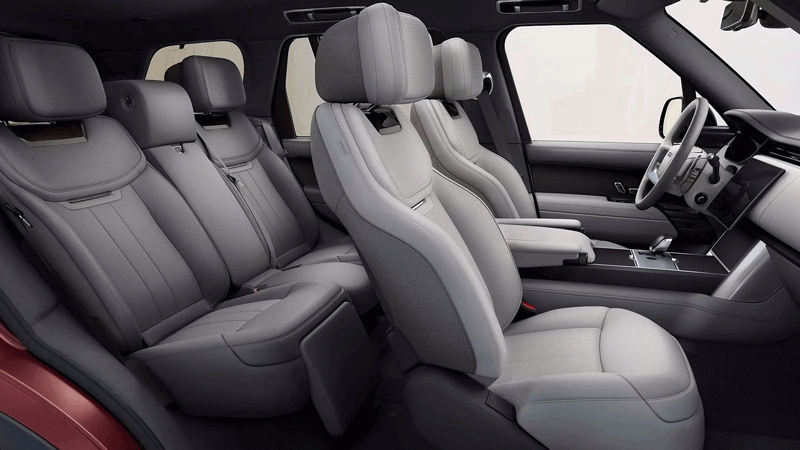When the door of a luxury car opens, a distinctive fragrance immediately pervades the air. Not perfume, but rather a sophisticated blend of premium leather, century-old precious woods, and rare metals. A wordless declaration of position and status, where luxury materializes.
In the universe of luxury automobiles, engine power, air suspension systems, and exterior lines are merely outer shells. The true soul of luxury lies deep within the interior space – where owners live, feel, and savor every square millimeter of space, every gram of material, every moment of use.
Mercedes – The Cabin Space as a Mobile Palace
Stepping into a Mercedes cabin is like entering a different kingdom. The ambient lighting creates an elegant atmosphere reminiscent of a royal theater. The Burmester 4D sound system resonates like a miniature symphony orchestra, with bass notes that run straight to your heart, creating an immersive experience in a three-dimensional sea of music.
Nappa Designo leather – the highest grade in Mercedes’ hierarchy, is selected from Alpine mountain farms where clean air and appropriate altitude help animal hides develop uniformly without insect marks.
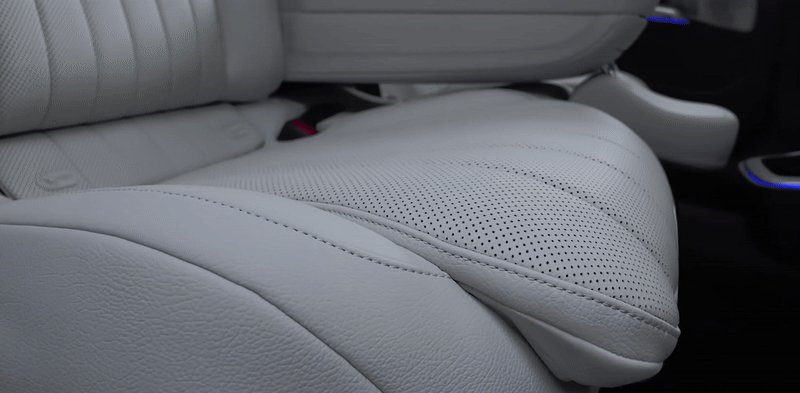
Each leather panel undergoes microscopic inspection before production to ensure fiber structure consistency. Only 1% of harvested leather meets Designo standards, and of this, merely 10% is chosen for the Maybach line.
The Designo leather tanning process employs “barrel dyeing” – immersing entire leather sheets in natural dye vats so color permeates evenly into each collagen fiber, creating color durability that lasts through generations of ownership.
BMW – Interaction Bar Activating Multi-Sensory Experiences
BMW has elevated touch technology to new heights with the Interaction Bar in the 7-Series. No longer just an ordinary touchscreen, but a control strip extending like a river of light from the driver’s door to the passenger door, where touch technology and light harmonize.
When you slide your finger across the control bar, the entire interior space changes according to your mood like a living organism. The system responds with light, sound, and even temperature, creating a convenient and delightfully multi-sensory interactive space unprecedented in automotive history. Watch this clip completely, and you’ll see how BMW has become stunningly beautiful, with design quality surpassing Audi, and lighting quality – once Audi’s pride – now requiring redefinition.
The Interaction Bar development process spanned 5 years, involving 120 engineers and designers. They tested 35 prototype versions, seeking balance between physical feedback and visual interaction. The haptic feedback technology can create tactile responses accurate to the micrometer, giving users the sensation of touching a physical surface while interacting with a touchscreen.
Lexus – Takumi, the Japanese Craftsmanship Creating Value
While German brands focus on technology and materials, Lexus brings the story of Takumi – master craftsmen from the land of cherry blossoms who undergo at least 10,000 hours of skill training – equivalent to 10 years of continuous work – before being entrusted with finishing interiors for flagship Lexus models.
Under the morning sunlight, the Lexus LS 500h awakens in a way no other luxury sedan can. When the day’s first rays penetrate the window, touching the glass inserts placed between the dashboard and door panels, a light ballet begins – interplaying light and shadow, sharp and soft lines blending together. This is the magical moment of Kiriko Glass – a centuries-old Japanese cultural heritage breathed into the interior space of a modern technological masterpiece.
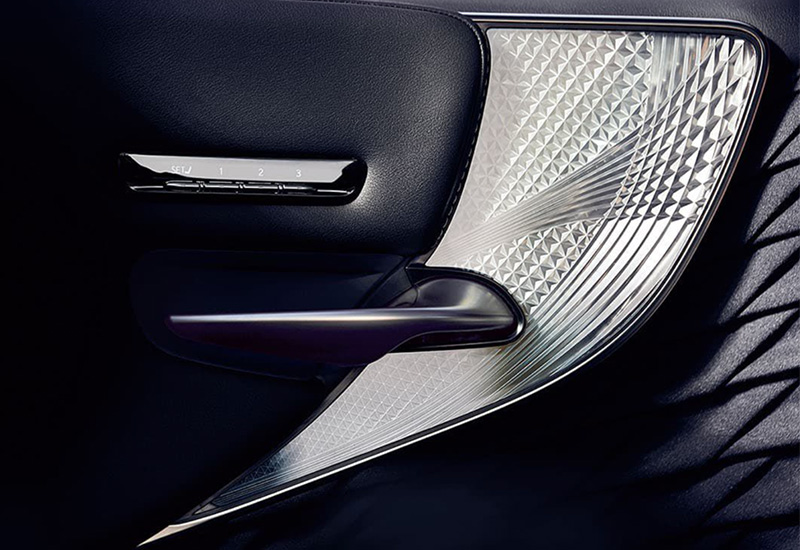
Kiriko was originally developed to decorate lanterns and sake bottles for Japan’s samurai and nobility. Each pattern carries its own meaning, from ocean waves representing eternity to cherry blossoms symbolizing life’s fragile beauty. The wonder of Kiriko Glass lies not in static beauty, but in its ability to interact with light. Each angle, each cut is calculated to reflect and refract light differently depending on the time of day and viewing angle.
Range Rover – A Symphony of Leather, Wood, and Metal
While the Lexus LS 500h conquers the senses with Kiriko visual artistry, the Range Rover SV creates an enchanting fragrance symphony. Entering a Range Rover SV Autobiography cabin, your sense of smell awakens to a unique aromatic blend only found when three elements – leather, wood, and metal – harmonize as one.
The Semi-Aniline leather seats exude a warm scent with hints of vanilla from the natural tanning process. This isn’t the typical sharp new leather smell, but rather a warm, mature aroma, like an antique library. The scent comes from a special 17-day tanning process using oak bark and chestnut extracts, creating a natural protective layer without artificial polymer coatings on the leather surface.
Walnut wood brings the second layer of fragrance – the scent of precious damp wood, reminiscent of an ancient forest after rain. Each wood panel is polished with 38 layers of lacquer, topped with linseed oil extract, creating perfect gloss and a subtle natural scent that gradually releases as cabin temperature changes.
Completing the fragrance symphony is PVD-coated aluminum or copper – a cool, pure metallic scent like morning dew. The coating technology uses no conventional chemicals, only pure metal ions fired in vacuum chambers, creating perfect surfaces without impurities and thus pure metallic fragrances.
Three fragrance layers – warm leather, profound wood, and pure metal – blend into an inimitable fragrance symphony, defining the Range Rover SV interior space.
Audi – Light that Speaks, Breathes, and Emits Fragrance
There was a time when automotive lighting was purely functional – illumination for reading maps, finding keys, or checking shirt stains before meetings. But in Audi, light has evolved into a living, warm entity like candlelight, one that breathes and emits fragrance.
“Warm Amber” mode – one of 30 available lighting modes – bathes the cabin in orange hues. Switch to “Deep Blue,” and the space transforms instantly, feeling like standing on a cliff edge on Iceland’s coast in early morning, with frost still clinging to your skin.
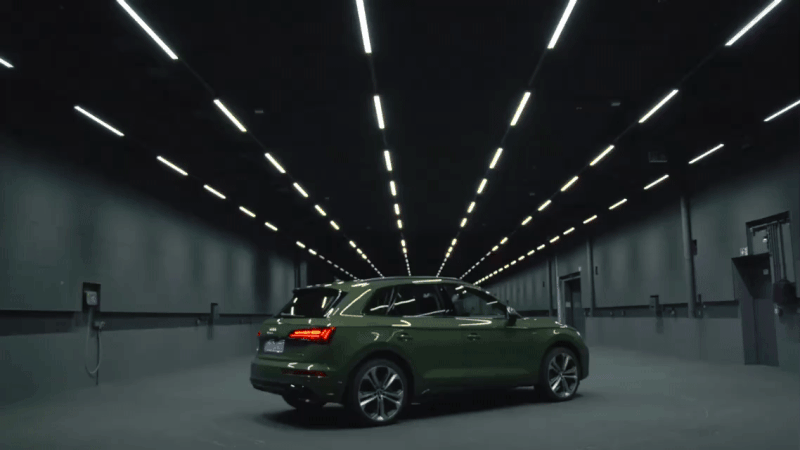
If Audi accomplished the unimaginable: cabin lighting changing with the driver’s heartbeat, perhaps Audi’s lighting technology would reach unparalleled heights. (Imagining) Through sensors integrated into the steering wheel, Audi measures the driver’s heartbeat, automatically adjusting lighting.
When heartbeats increase – perhaps from stress during rush hour driving – the light automatically switches to the gentle, pure “Serenity” mode. Conversely, when sensors detect slow, steady heartbeats, as during a late-night empty highway drive, the system activates “Vitality” mode with light orange-red tones, helping maintain alertness.
The Fine Line Between True Luxury and Ostentatious Display
When luxury value is elevated (and accepted), brand value consequently increases over time. An ordinary car, even if silver-plated or gold-plated, is merely localized luxury with personal character. True luxury doesn’t reside in glittering external wrapping but is built from within, from the chassis and engine to the smallest details and unexpected touch points within the cabin.
The three major automobile industry players from Germany, America, and Japan consist of fewer than 15 branded manufacturers, while China has hundreds; Chinese craftsmen’s skills rank first globally; and there’s no shortage of thousand-year cultural stories; yet they’ve never managed to lay a finger on the luxury dream.
Brands like Porsche, Ferrari, Rolls-Royce, or Bentley don’t sell cars; they sell experiences, side stories, even membership in exclusive clubs. True luxury is the sum of heritage, technique, and experience. No more. No less. Intangible values that cannot be purchased by covering a car with gold plates. A gold-plated Camry forever remains just a Camry.
